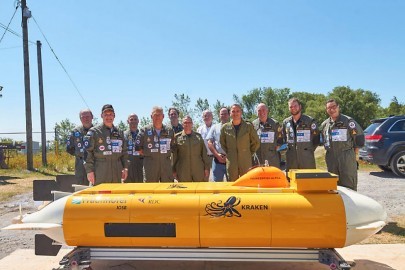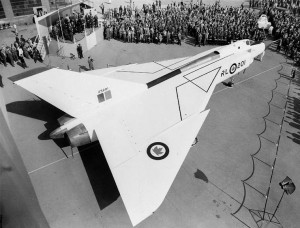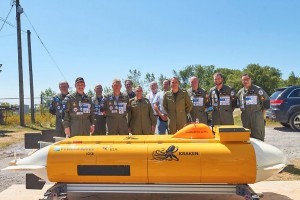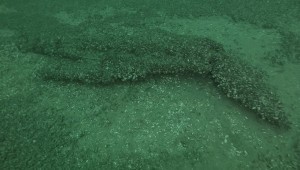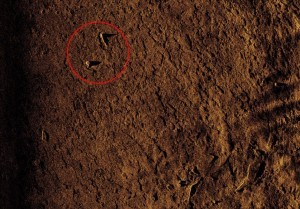Early last year, we first heard about Fraunhofer’s DEDAVE (Deep Diving AUV for Exploration) unmanned submersible. Then this July, we got word of an initiative aimed at locating sunken flight models of a famous Canadian jet fighter, the Avro Arrow. Now, the two have come together – Fraunhofer is reporting that one of its DEDAVEs has located a couple of of the models.
To recap, the Avro Canada CF-105 Arrow was a state-of-the-art delta-winged fighter built in the 1950s. The project was scrapped by the federal government in 1959, however, and all six completed (or near-complete) aircraft were ordered to be destroyed. Although the planes are now long-gone, a new project was launched this year to retrieve nine scale models from the bottom of Lake Ontario.
Measuring 3 meters long with a 2-meter wingspan (10 x 6.5 ft), those models were launched by booster rockets in a series of flights between 1954 and 1957 to test the aerodynamics of the aircraft design, prior to a production model being built. They reached supersonic speeds, and transmitted flight data back to ground crews as they flew, before ultimately landing in the lake and sinking.
Project partner Kraken Robotics Inc. has been using a DEDAVE to search the lake bottom for those models – the submersible was renamed the ThunderFish Alpha for the project. It began performing sonar scans starting at the end of July, and succeeded in locating two of the models in September. They’re due to be salvaged before the end of the year.
Billed as “the world’s first autonomous underwater vehicle [AUV] to be developed from the outset with a view to series production,” the DEDAVE is designed to be easily manufactured on an assembly line, and thus relatively inexpensive to buy. At less than 700 kg (1,543 lb) it’s also quite light for an AUV, and can travel autonomously for up to 20 hours on one charge of its eight batteries, diving to a maximum depth of 6,000 meters (19,685 ft).
The search for the remaining models has been put on hold for the winter, and is scheduled to resume next June.
Source: newatlas
Ask me anything
Explore related questions
